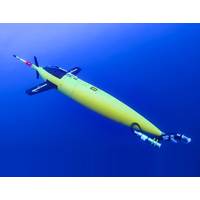
New Tech Frontiers for Ocean Gliders
data. We observed a pod of common dolphins from the vessel we were on so could time stamp the data and had good corroboration. We could also see machinery start up noise (in the data). In parallel, we developed signal processing, as part of a three-year knowledge transfer partnership with the University of Bath, using a low power, low footprint FPGA (field programmable gate array) to process data in real time.”They then looked at the initial four hydrophones and processed the data to beam form and get three beams – forward, aft and broadside, to get automated detections – proving
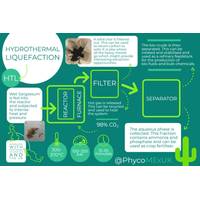
PML: Invasive Seaweed Finds New Role as Coastal Cleanup Hero
A research team, led by the University of Exeter and the University of Bath, has developed a cheap and simple way of creating biofuel and fertilizer from seaweed, aiding in its cleanup and the removal of plastic from tourist beaches in the Caribbean and Central America.The study, recently published in the Journal of Chemical Technology and Biotechnology, aims to remove invasive seaweed, like Sargassum, which is costly to cleanup and deters tourists, while also producing biofuel in a sustainable way. Professor Mike Allen of the University of Exeter and Plymouth Marine Lab explained the need for an

Researchers Use AI to Map Marine Environments
Researchers at the University of Bath have developed an AI model that can automatically classify underwater environments directly from sonar measurements.Sonar is commonly used to map the ocean floor, and seabed composition (e.g. mud, clay or rock) affects the way the sound is reflected back. Salinity, depth and water temperature also affect how sound waves are propagated through water. This means that sonar measurements at different depths and distances can give accurate soundings of the ocean’s properties, for example how underwater currents propagate, how the deeper ocean changes with the
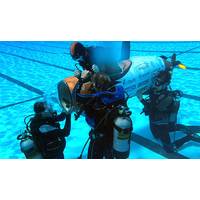
Dates Set for Human-powered Sub Races
submarines.” Some of the university teams that have already expressed an interest in taking part in eISR 2018 include University of Victoria (Canada), Rhine Waal University (Germany), University of Tehran (Iran), TU Delft (Netherlands), University of Auckland (New Zealand) and University of Bath (UK)
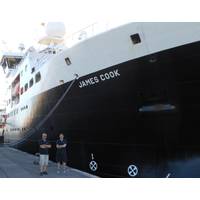
Researchers Investigate Mineral Deposits in the Deep Ocean
Programme is led by the National Oceanography Center (NOC) using the RRS James Cook, a national facility operated by the NOC and the Isis ROV, which is part of its national marine equipment pool. The MarineE-tech partnership also includes the British Geological Survey, HR Wallingford, the University of Bath, Marine Ecological Surveys Ltd, the University of Sao Paulo (Brazil), the South Pacific Island Communities, the United Nations’ International Seabed Authority, Gardline Ltd and Soil Machine Dynamics Lt
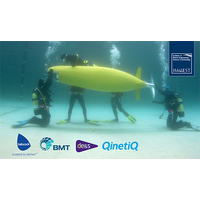
Babcock, BMT Support Human-powered Sub Races
degrees to a real, tangible machine. It is also a great way to learn to work together as a team in a pressured environment.” There are nine university teams that have now qualified: Texas A&M, University of Michigan, Rhine Waal University, Ecole de Technologie Superieure, University of Bath, Delft University of Technology, University of Auckland, University of Warwick and University of Washington. Bentely Altizer, Captain of the University of Washington team, commented, “We have a very unique situation where dozens of people get together and rally around a common

Science Expedition to Study Deep-sea Deposits
in the territories of small nation states with developing economies. We also intend to assist with developing scientific capability in the South Pacific Islands.” The partnership spans industry, academia and policy makers and includes the University of San Paulo (Brazil), the University of Bath, the British Geological Survey, SOPAC and the South Pacific Island Communities, the United Nations’ International Seabed Authority, HR Wallingford, Gardline Ltd, and Soil Machines Division Ltd, Gateshead. There will also be opportunities for students from NOC and IO-USP to participate
Acoustic Zoom: The Future of Offshore Exploration
today’s exploration projects continues to rise. Given the falling oil prices and rising production costs, current market dynamics will become a catalyst for changes in conventional explorative and extraction practices. A new approach for seismic surveying developed by researchers at the University of Bath, offers a resolution and efficiency beyond the reach of existing seismic methods, reducing the need of unnecessary drilling and the associated impact to the marine environment. According to the World Ocean Review, the total global energy consumption has risen by about 70% over the past three
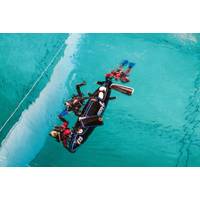
Human-powered Sub Races Conclude in the UK
of Applied Sciences (with Inia) from Germany; University of Delft (with WASUB 4) from the Netherlands; University of Auckland (with Taniwha) from New Zealand; University of Michigan (with Odyssey) and University of Washington (with Laurie Belle) from the U.S.A.; and three teams from the U.K. with University of Bath (with Menrva), University of Plymouth (with Mayflower) and University of Warwick (with HPS Shakespeare). “Several boats entered the race for the first time this year, most noticeable was Mayflower from the University of Plymouth in the U.K. who won the most Reliable Boat Award and



 February 2024
February 2024





